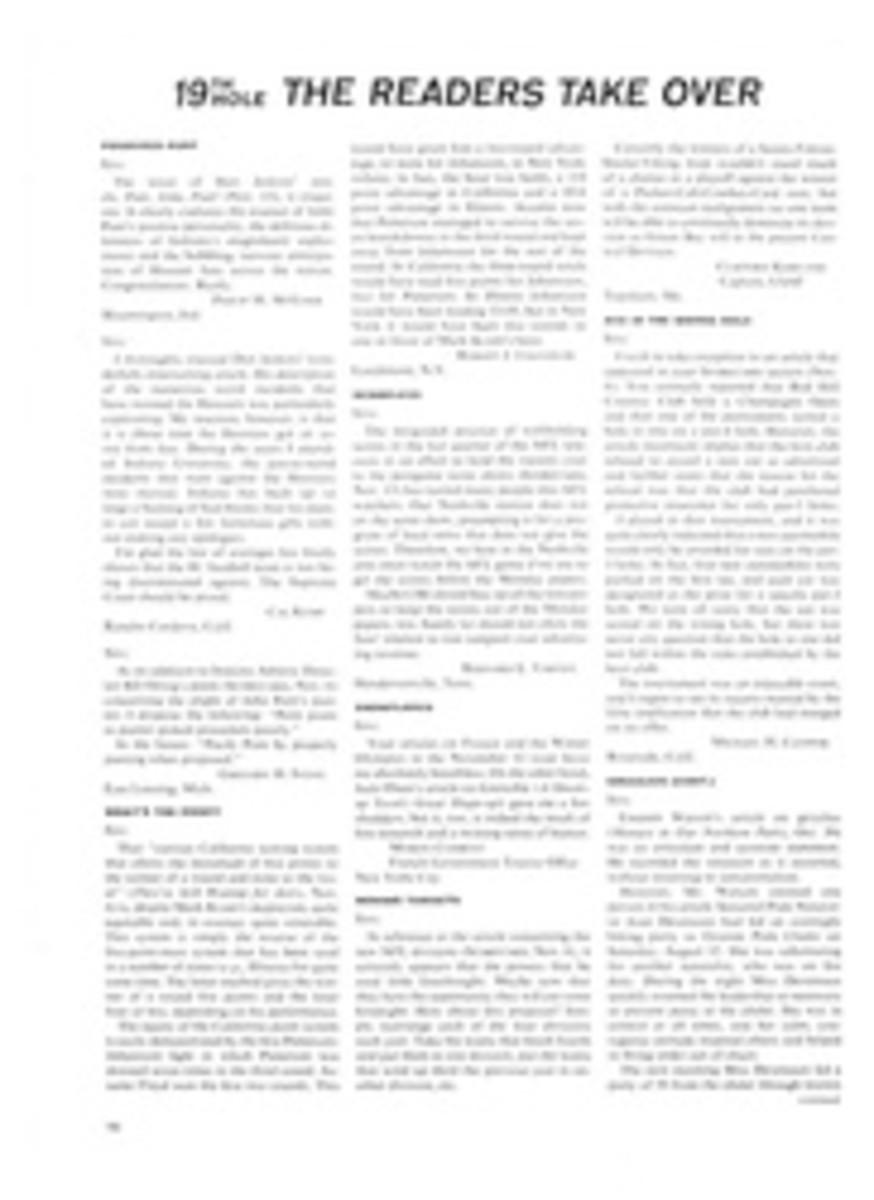
A brand-new horror for harried husbands
In 1741, while Vitus Bering lay dying of scurvy, fever and exposure on an uninhabited island in the sea that subsequently was to bear his name, his stranded crew from the St. Peter began to build a makeshift vessel—and the beginning of a fortune. When they returned to the mainland, they brought with them more than $100,000 worth of sea-otter furs, which they sold to the Russians.
Along the are that bends from the Sea of Okhotsk to Monterey Bay, sea otters were as thick as the herds of seal and schools of salmon with which they shared the North Pacific. But Bering's voyage set off such a slaughter of this frolicsome, delightful little animal that by 1911 the species became virtually extinct. Not more than 500 remained along the entire American and Asiatic shores of the North Pacific.
Yet this fall some 50 sea-otter pelts were displayed at the Pacific Science Center in Seattle, and next January 1,000 furs will be sold at auction on the Seattle Fur Exchange. Since each pelt is worth $1,000 and it takes three or four to make a coat, most people are still going to have to settle for mink. But the return of the otter, particularly in such quantities that a careful, controlled harvest is possible, is another encouraging step in man's growing awareness of his responsible relationship with nature.
When Bering's men sold their first boatload of furs, sea-otter skins became more valued in Russia than sable. Catherine the Great and members of her court draped themselves in the shimmering pelts. Chinese merchants at frontier Siberian trading centers exchanged silks, tea, spices and pearls for sea-otter fur. Wealthy Chinese and Mongolians promised such rich rewards to the sellers that Siberians were lured across the Bering Sea, down the Aleutian chain island by island, and at last to the Alaskan mainland for more and more pelts, and when Siberian promyshlenniki followed in Bering's wake, this ruthless breed of adventurers slaughtered the otter and native Aleuts with equal abandon. As many as 50,000 pelts were taken in a single year.
Captain James Cook's third voyage of exploration to the New World introduced sea-otter fur to the markets of Western Europe. In March of 1778 Cook made a landfall at Friendly Cove at the mouth of Nokota Sound on the wild coast of northwestern Vancouver Island. While he cut new spars in nearby cedar forests for his battered ships Resolution and Discovery, his British sailors traded with Hesquiat Indians for the beautiful furs. These British sailors, among them young Lieut. William Bligh, later of the Bounty, discovered the astonishing value of the pelts when Chinese merchants in Canton bid fortunes for the skins—as high as $3,000 a single pelt. There then began an international struggle by Russia, Spain, Great Britain and the U.S. for monopoly of the sea-otter fur trade and rule of the northwest coast of America, inspiring an era of violence almost without equal in the history of the seas. Murder, treason, piracy, heartless exploitation of Aleuts and Indians were an accepted part of the game as trading in sea-otter pelts reached its height from 1745 to 1880. Thereafter, until the otter was put under federal protection in 1911, the hunt became more and more difficult.
In World War II, when the U.S. forces moved into the Aleutians, they reported seeing "a lot of goofy little animals." Naturalists among the men identified them as otters. The comeback was well underway. Present population is estimated at 40,000 animals—more, perhaps, in some areas than in Bering's time and certainly enough so that a regulated number of pelts can be taken each year. The otters now are being harvested by native Aleut hunters who are working under supervision of biologists of the Alaska Department of Fish and Game, and the 1,000 pelts available early next year will be the first of an annual sale by the state of Alaska.
The otters picked for Alaska's new trade are shot with rifles equipped with telescopic sights as they swim close to their secluded beaches. Skins average five feet in length, two to 2½ feet in width. Rich, dark-brown fur shimmers on the surface, blooming to a lighter, downy-soft undercoat, dense and woolly. The fur is an inch long, of fine, closely packed fibers growing ever more beautiful with the aging of the animal. Sea otters are slow breeders, the female bearing a single pup at a time. Most endearing is her trait of nursing her offspring cuddled in her forepaws as she floats on her back in the sea. Playful, intelligent and unafraid of man, otters feed mainly on mollusks and sea urchins, which they crush with their large blunt teeth.
Our atomic age brings a new threat to the otter that even strict control of the harvest will not alleviate. Alaska Governor Walter Hickel has asked protection of Amchitka Island's sea-otter population before the Atomic Energy Commission conducts tests there. Hickel has requested postponement of the tests until a three-point program to save the otters has been carried through. He wants the animals transplanted from Amchitka to habitats elsewhere in Alaska. He asks that Alaska be compensated for sea otters destroyed in the tests and for subsequent loss of production and reintroduction of the animals if the population and habitat are destroyed by the planned nuclear explosions. Hickel is not alone in hoping that the otter boom on Amchitka will be protected from the big blast.
PHOTO
THE PLAYFUL, INTELLIGENT SEA OTTER SPENDS MOST OF ITS TIME IN THE WATER

